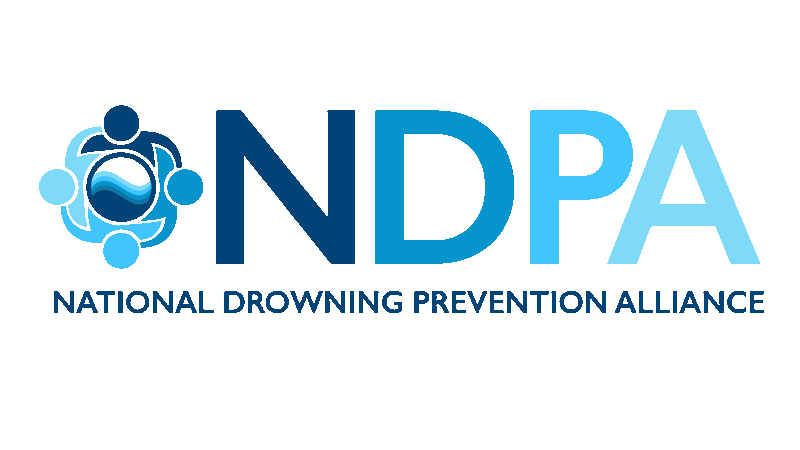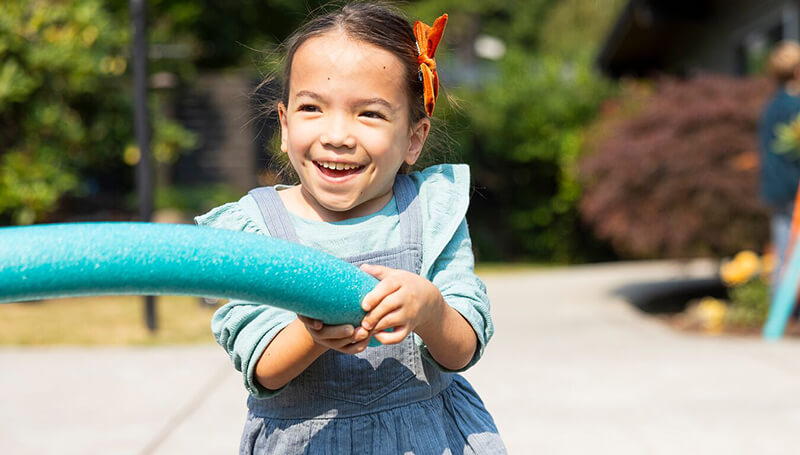Resources for Drowning Prevention Professionals
Washington state is a leader in drowning prevention. Seattle Children’s and many other organizations have been working together for decades to:
- Understand what factors lead to child and teen drownings in our state.
- Work with community coalitions to keep families safe in and around water.
- Develop programs to reduce drowning risk and prevent drowning.
Washington State Drowning Prevention Network
The Washington State Drowning Prevention Network was developed in 1994 to provide a forum for organizations to work together to prevent drowning.
Our key messages are: Know the water. Know your limits. Wear a life jacket.
The network meets twice a year. To join and to receive e-mails and event announcements, fill out this form.
The network is led by:
- Washington State Department of Health
- Safe Kids Washington
- Public Health Seattle and King County
- Washington State Parks Boating Program
- Washington Recreation and Park Association
- Seattle Parks and Recreation
- Seattle Children’s
Life Jackets
-
Life Jacket Loaner Programs
Life jacket loaner programs provide opportunities for families and friends to borrow life jackets for free at boating ramps, bathing beaches and other locations. To learn more about loaner programs in Washington state and how to develop a program, email us.
-
Life Jacket and Floatation Device Publications
Association between wearing a personal flotation device and death by drowning among recreational boaters: a matched cohort analysis of United States Coast Guard data. P Cummings, BA Mueller, L Quan. Injury Prevention 2010; doi:10.1136/ip.2010.028688
Barriers to life jacket use among adult recreational boaters. Quistberg DA, Quan L, Ebel B, Bennett E, Mueller B. Inj Prev 2014; 20: 244-250
Informing policy on open water drowning prevention: an observational survey of life jacket use in Washington state. Chung C, Quan L, Bennett E, Kernic M, Ebel M. Inj Prev 2014; 20: 238-243
Low life jacket use among adult recreational boaters: a qualitative study of risk perception and behavior factors. Quistberg DA, Bennett E, Quan L, Ebel B. Accident Analysis & Prevention 2014; 62: 276-284
-
Swim Ability
Adolescent Water Safety Behaviors, Skills, Training and Their Association with Risk-Taking Behaviors and Risk and Protective Factors. Sakamoto I, Stempski S, Srinivasan V, Le T, Bennett E, Quan L. Children 2020; doi: 10.3390/children7120301
Can you really swim? Validation of self and parental reports of swim skill with an in water swim test among children attending community pools in Washington State: Mercado M, Quan L, Bennett E, Gilchrest J, Levy B, Robinson L, Wendorf K, Aurora Gangan Fife M, Stevens M, Lee R. Injury Prevention 2015; doi:10.1136/injuryprev-2015-041680
Drowning Prevention Policy
-
Life Jacket Policy
Life jackets protect swimmers and boaters in, on or near the water. Even skilled swimmers and boaters sometimes find themselves in unexpected situations, such as a rapid change in the depth of open water or being thrown from a boat into the water after a collision. Unfortunately, many people do not wear life jackets. In 2019, 85% of boating-relating drowning victims were not wearing a life jacket, according to the United States Coast Guard Recreational Boating Statistics.
-
Open Water Drowning Prevention Policy
Drowning is a leading cause of unintentional injury death among children and youth in Washington state. A majority of these drownings occur in open water, such as lakes and rivers. Policies are an important way to improve open water safety and prevent drowning.
US National Water Safety Action Plan
Open Water Swim Area Safety Checklist (PDF) and Community Water Recreation Safety Checklist (PDF) – see project description (PDF)
-
Swimming Pool Policy
Pool Facility Owner and Operator Resources (Washington State Department of Health)
Pool and Spa Safety (Public Health – Seattle and King County)
Pool Safely (Consumer Product Safety Commission)
Model Aquatic Health Code (Centers for Disease Control)
Swimming and Water Safety Programs
-
Swimming Access
Everyone swims: a community partnership and policy approach to address health disparities in drowning and obesity. Stempski S, Liu L, Grow HM, Pomietto M, Chung C, Shumann A, Bennett E. Health Educ Behav 2015; 42(1): 106S-114S
Responding to a Request: Gender-Exclusive Swims in a Somali Community. E Moore, M Ali, E Graham, L Quan. Public Health Reports 2010; 125(1): 137-140
Email us to learn more about how you can bring these programs to your community.
-
Health Fair Water Safety Promotion Events
Water safety and drowning prevention events can educate children, teens and families about staying safe around the water. Ideally, the event is informational, educational and interactive. The following are activities are a starting point for planning and development of water safety events.
Life Jackets and Boat Safety:
- Have life jackets of various sizes and types to try on. We know that if parents are comfortable choosing and fitting a life vest, their child is more likely to be wearing one.
- Have a scale to weigh kids to help determine correct size.
- Use a timer and have a family race to pick out the right life jacket and put it on. Talk about how difficult it would be if that had to be done in the water.
- A large blow up raft is a great attraction to children. Have all children put on a life jacket before getting in the raft. Talk about always wearing a life jacket when in a boat or a raft. Have volunteers shake the raft around for a little excitement.
-
Water Facility Water Safety Promotion Events
Every year, many pools, beaches and other water facilities around Washington state host swimming and water safety events for families and community members. Each event is designed by the facility to best fit their needs. Usually, the event includes a combination of water safety activities and free swim time. Use this as a list of ideas and a starting point for what you may develop.
- Include water safety instruction, elementary rescue and life-jacket use and free swim time.
- Have a raffle for free life jackets, free swim lessons and door prizes.
- Have participants do as many hands-on activities as possible.
- Use skits and videos as well as demonstrations.
- Set up stations where you teach water safety skills, demonstrate elementary forms of rescue, check life jackets, test participants' flotation gear, etc. Create a form to stamp showing participation at each station. Give a prize or free swim to those who visit all the stations.
- Have a water safety “carnival.”
- Use canoes and boats.
- Set up a table for flyers, safety information and brochures. Have someone staff this table.
- Promote your swim lessons, along with all of your other programs.
- Provide fun snacks like popcorn or ice cream.
- Have local sponsors contribute door prizes or refreshments.
- Promote your event on social media, local news outlets and at local schools, camps, daycares and community centers and with posters at your facility.
- Use names and timing for your event, like ‘April Pools Day’ to kick off the season and ‘Summer Splash-Tacular’ for events in mid-summer
Rescue Techniques
- Use a large container of water to demonstrate what floats and what doesn't. Have a piece of wood, Styrofoam, a rubber ball, a rock, bottle, etc. This provides teaching moments about the buoyancy of life jackets and about what you could throw to someone in distress out in the water (vs. diving in yourself).
- Make a water rescue tool from a gallon milk jug and attach a rope to the handle. Put one inch of water in the jug and screw top on tightly. Have children or adults practice throwing the jug at a target or into a large container.
Prizes and Take-Aways
- A life jacket raffle is a good way to bring people to the booth. Be sure to include child's weight on the form so you will know what size is needed.
- Have crayons or markers for children to use for coloring sheets or booklets.
- Provide water safety whistles, stickers, zipper pulls.
Email us for more information and to share your most popular water safety activities.
-
Drowning and Boating Injury Surveillance and Data Reporting
Washington State and County Fatal and Non-Fatal Drowning Injury Tables
Washington State Open Water Drowning Reporting Tool (PDF)
Washington State Department of Health Injury and Violence Prevention
Recreational Boat Occupant Injury Surveillance (Safe States)
A case-control study of boat-related injuries and fatalities in Washington state. Stempski S, Schiff M, Bennett E, Quan L. Inj Prev 2014; 20: 232-237
Analysis of paediatric drowning deaths in Washington State using the child death review (CDR) for surveillance: what CDR does and does not tell us about lethal drowning injury. L Quan, D Pilkey, A Gomez, E Bennett. Injury Prevention 2011; 17: i28-i33
Association of water temperature and submersion duration and drowning outcome. Quan L, Mack C, Schiff M. Resuscitation 2014; 85: 790-794
Support Our Work
Support Seattle Children’s water safety education and programs to increase access to life jackets. Designate your donation to “water safety.” Donate now.


